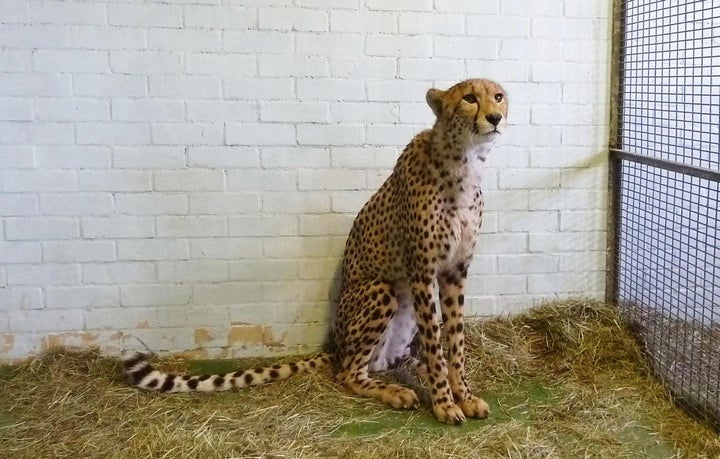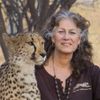
People like cheetahs. Cheetahs are the world's fastest land animal, capable of reaching speeds of 70 miles per hour. They are beautiful. They are the only big cats that can purr. They have fascinated people for over 4,000 years. Helping people live side by side with cheetahs is the key to Africa's most endangered cats' survival.
Children around the world learn about the cheetah and its remarkable speed. It's astonishing how many facts even the youngest children can recite about the cheetah. However, most people around the world don't know how critically endangered the cheetah is -- with numbers down from 100,000 in the wild in 1900 to approximately 10,000 wild cheetahs today.
If the cheetah loses its race for survival, the American Prong-horn Antelope will become the fastest land mammal, and all those textbooks naming the cheetah as the fastest land animal will need to be changed. More importantly, entire ecosystems are disturbed when a top predator like the cheetah is removed.
How did the American Prong-horn antelope become the second fastest animal on earth? A little known fact about the cheetah is that it originated in North America about 4 million years ago, migrated across most continents, and later became extinct in North and South America. Now it is viewed as an African big cat, but it used to roam most of the world. Its ancient prey, the Prong-horn Antelope, continues to run at speeds of up to 60 miles per hour, even though there are no predators that can catch it.
The key to saving the cheetah is to make this a valuable proposition for people who share their land with the cheetah. People who live in cheetah-range countries have to be given tools that work to live side by side with cheetahs and other predators, without risking their livelihoods. Losing even one goat affects livestock ranchers greatly, thus providing them with non-lethal predator methods improves lives, for people and the cheetah.
I founded the Cheetah Conservation Fund (CCF) in 1990, moving to rural Namibia so that I could live at ground zero for wild cheetahs. More than 90 percent of wild cheetahs live on private, unprotected lands, and are perceived by many people as a threat to their livelihood. From 1980 until 1990, nearly 10,000 cheetahs were shot as vermin.
As an American woman moving to the new country of Namibia, it took time for the landowners to understand my mission to save the cheetah. I began by conducting a two-year survey of every farm in Namibia, asking respectfully why the cheetah was loathed, and what evidence was there that the cheetah was responsible for all the reported livestock losses. I listened, and shared simple ways that farmers could protect their livestock from predators in non-lethal ways.
One very effective means of predator protection has been CCF's Livestock Guard Dog Program. Yes, dogs are helping big cats, and it's working!
I chose the Turkish Anatolian shepherd and Kangal dogs for this program, as the breed has been protecting livestock in Turkey from bears and wolves for centuries. CCF started with 10 puppies, bonding them with goats, sheep and other livestock. The dogs are trained to scare away predators, and given to farmers and ranchers at no cost. A CCF team follows up with each dog to be sure that it is doing its job. Today there are over 100 CCF livestock guard dogs living working on farms, resulting in an 80 percent reduction in livestock loss.
CCF has many programs that are effective at teaching non-lethal predator control, and is actively involved in habitat restoration and government policy to adopt pro-cheetah ecosystem policies. I look forward to sharing more about our programs and success stories in future blogs.
Until then, if you would like to help us save the cheetah in the wild, please visit our website at www.cheetah.org. You will find inspiring stories in our Kids for Cheetahs page about children who have come up with ingenious ways to help their beloved cheetah continue to win its race for survival. These children are the next generation of conservationists, and we are grateful for their devotion to the cheetah and other issues that face our world.
